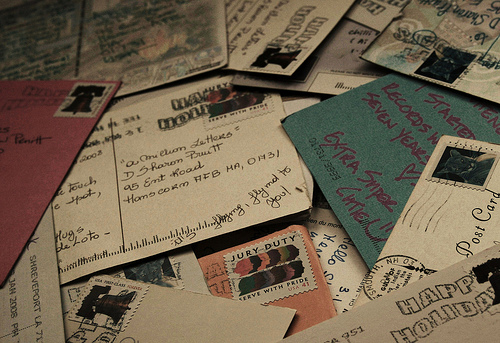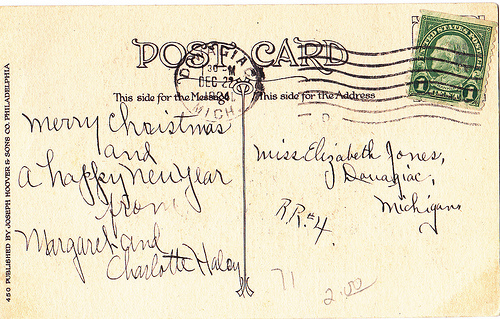 Recently, I’ve noticed something. If you send me an email, the likelihood that I’m going to respond is pretty small. But if you send me a message on Twitter, the likelihood that I’ll respond is much higher. Certainly, part of it is that I get fewer messages on Twitter. But you might be surprised at how close it’s getting in volume when you add @replies to direct messages. The bigger factor for me, is the length of the messages.
Recently, I’ve noticed something. If you send me an email, the likelihood that I’m going to respond is pretty small. But if you send me a message on Twitter, the likelihood that I’ll respond is much higher. Certainly, part of it is that I get fewer messages on Twitter. But you might be surprised at how close it’s getting in volume when you add @replies to direct messages. The bigger factor for me, is the length of the messages.
If I open up an email and see it filled with paragraphs of information, guaranteed my eyes are going to glaze over. Certainly sometimes it’s an important message that I do need to read, but most of the time it’s just a core message filled with paragraphs of bloat. I don’t want or need the bloat, I need the core message. And that’s why I love Twitter. You simply cannot go over 140 characters. And more often than you may imagine, that’s enough.
Now, on the face of it, plenty of people will disagree with me on that point. But think about it. In an age where we’re bombarded by tons of information, from multiple angles, all day long, there is something beautiful about brevity.
I used to read screenplays for a living. Trust me when I say that there is no shortage of people who can blather on about something to seemingly no end. But the skill in writing a screenplay often came down to if you could convey what you needed to convey in just a few lines. It’s not an easy thing to do — at all. And while it’s not quite the same because it’s even more compact, Twitter forces you do to a similar thing in its own way. And Twitter is hardly the only form of communication that has done this.
Most users know by now that the 140 character limit of Twitter is actually tied to the limits of text messaging. Text messages can only be 160 characters long (Twitter needed to reserve the extra 20 characters for usernames). But do you know where the 160 character limit comes from?
 The LA Times ran an excellent piece a few months ago about Friedhelm Hillebrand, the father of the modern text message. He dreamed up the 160 character limit while working at a typewriter in the mid-1980s, trying to see how long sentences needed to be to convey something. He found 160 characters was the magic number he kept arriving at. But the deciding committee for SMS still wasn’t sure until they looked at postcards and found that most of those had messages of 150 characters or less.
The LA Times ran an excellent piece a few months ago about Friedhelm Hillebrand, the father of the modern text message. He dreamed up the 160 character limit while working at a typewriter in the mid-1980s, trying to see how long sentences needed to be to convey something. He found 160 characters was the magic number he kept arriving at. But the deciding committee for SMS still wasn’t sure until they looked at postcards and found that most of those had messages of 150 characters or less.
And so you see, while you may think Twitter’s character limit is silly or frustrating, it’s actually born out of two other forms of communication that are widely accepted and used the world over. You may not think of Twitter being just like a postcard, but in some ways it is — one that you can instantaneously send to many friends or acquaintances at the same time. And minus the cost of a stamp.
Even with the rise of technology, the lure of the short message remains. And that was the key reason why I found Twitter compelling when I first started using it over two years ago. I never thought of the limitation in a negative sense, but rather as something that could inspire creativity in messages. And could even spur communication.
It’s liberating to know that you only have 140 characters or less to respond to something. For a lot of messages, that removes a huge burden of trying to say enough to the person you’re talking to so that they don’t think you’re being rude. With a 140 character limit, a correlation between briefness and rudeness doesn’t exist.
And that’s why more and more I’m finding myself telling people, “Just message me on Twitter.” It’s a two-way street. I don’t want to have to read you go on and on about something that could be said in one line, and you won’t have to listen to me go on and on about something in response. Again, it won’t work for all messages, which is why Twitter or something like it will never kill email, but for a lot of messages, it works just fine.
Characters and time are saved. It’s a limitation that is liberating.
[photos: flickr/pink sherbert photography & inlaterdays]